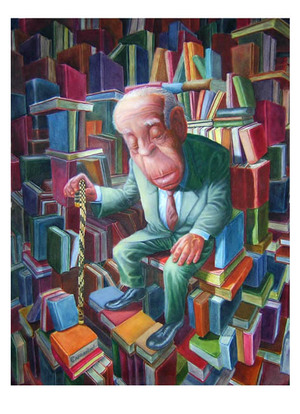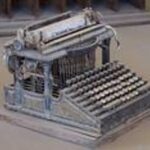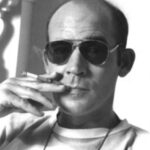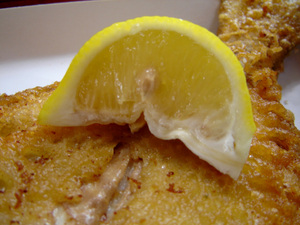Jorge Luis Borges’ Ficciones is a collection of short stories all designed around a particular theme: reality. More specifically, Borges is interested in a magical realism, one in which he can use his literary power to draw insight from the world, by blurring the lines between fantasy and fact. Throughout the seventeen short stories contained within the book, Borges entices and guides readers into exploring their own ideas about reality.
Ficciones displays a penchant for philosophy that few authors can equal. While writing about “reality” is perhaps the most clichéd topic a writer can tackle, Borges manages to frame his writing in a way that provides a window of insight into the world; this is what so greatly differentiates himself from his literary peers. Perhaps the greatest reason that this is the case comes from Borges’ utilization of magical realism; one of its greatest strengths is that it allows stories to be read and interpreted in a variety of ways.
This style of literary writing, where magical elements appear in realistic settings, has a name: magical realism. Borges is strongly associated with this style, the name of which was coined in the 1920s by German art critic Franz Roh. Though the term came about in reference to American painters of the period, eventually magic realism came to describe the style of literary figures, perhaps even more often than it did their painting peers. As French critic Francois Menton states in his work on the magical realist, “Borges stresses […] extreme objectivity and ultraprecision employed by the Magic Realists to invest reality with a touch of magic” (414). He continues: “the Magic Realist worldview is borne out by the characters and events of the story: reality is stranger than fiction; things occur unexpectedly” (416).
The vast majority of the stories in Ficciones take place in a modified version of our reality. One such story is “The Library of Babel,” a piece about a man who is the caretaker in a library of infinity. In the narrator’s words:
“Everything is there: the minute history of the future, the autobiographies of the archangels, the faithful catalogue of the Library, thousands and thousands of false catalogues, a demonstration of the fallacy of these catalogues, a demonstration of the fallacy of the true catalogue, the Gnostic gospel of Basilides, the commentary on this gospel, the commentary on the commentary of this gospel, the veridical account of your death, a version of each book in all languages, the interpolations of every book in all books” (Borges 83).
As the narrator describes it, this library is in no way plausible; it simply could not exist within our world. The breadth of the knowledge within, as well, is seemingly unwritten by human hand, and instead merely exists within the library for searchers to find; this is another physical impossibility. Borges, however, utilizes this library as a metaphor… not as something that needs to be plausible. Within this imaginary library, Borges draws a parallel to a few of the things that we all ponder throughout our lives: the seemingly infinite nature of the universe (infinite library), the existence of an absolute truth (pre-existing texts), and the question of whether or not the “truth” can ever be discovered (as the narrator seems to believe that the search is in vain).
The Library of Babel fits Menton’s description perfectly. As stated above, this infinite library cannot exist. The story, however, does not revolve around the library; it centers on the characters within it. Hundreds of the library’s dwellers swarm its shelves, each in pursuit of his or her “Vindication,” the book that will justify the existence of the individual who reads it. “When it was proclaimed that the Library contained all books, the first impression was one of extravagant happiness. All men felt themselves to be the masters of an intact and secret treasure. There was no personal or world problem whose eloquent solution did not exist in some hexagon.” (Borges 83). The library exists as a set piece for the story, not as its focal point, which keeps it in line with the boundaries of magical realism. The narrator’s true interest lies in the reactions of the men and women around him, whom he observes with intense scrutiny and detail. He catalogs the “excessive depression” the searchers suffer, how some “went mad,” and comes to the realization that the “certitude that everything has been written negates us or turns us into phantoms” (87). A vital aspect of magical realism is that its magical elements not define the narrative so much as they magnify it. Having this magical Library of Babel at his disposal, the narrator utilizes its properties to illustrate the very real feelings that men and women would have in the situation; exactly what these feelings may be is entirely up to the reader. As one commenter put it, “it is already more than apparent that the writings of Jorge Luis Borges are one of the relatively few subjects in the world that seemingly represent all things to all people” (Christ 204). There is no singular explanation to works of Borges, and because of this, no reader will look at his stories the same way twice.
“Tlön, Uqbar, Orbis Tertius,” too, supports the idea that Borges writes from a strong interest in magical realism. In it, a friend of the narrator happens upon a single dictionary. The dictionary, the only copy of its kind, contains a strange reference to a country, Uqbar, unknown to any other text. The allusion to this imaginary country leads the narrator’s character deeper and deeper, until he discovers more pieces of the “puzzle.” The literature on Uqbar, the encyclopedia suggests, “never referred to reality, but to the two imaginary regions of Mlejnas and Tlön” (19). Tlön, it turns out, is not simply an uncharted region; Tlön is an entire planet. Why, however, is it that only one book of this description exists, and where could it have come from?
After much time spent trying to track down the origin to this mystery, the narrator makes an incredibly indispensable find: an entire volume of what appears to be a complete set of encyclopedia regarding Tlön:
The book was written in English and contained 1001 pages. On the yellow leather back I read these curious words which were repeated on the title page: A First Encyclopedia of Tlön. Vol. XI. Hlaer to Jangr. There was no indication of date or place (Borges 21).
The encyclopedia details Tlön’s incredibly rich and deep history, its own systems of math and literature, and its own radical philosophical views. The people of Tlön understand the world “not as a concurrence of objects in space, but as a heterogeneous series of independent acts” (23). Eventually, however, the narrator comes upon proof, in the form of a letter, stating that Uqbar and Tlön are human-invented places, the work of “a benevolent secret society” that came together to invent a country” (31). The narrator is nevertheless intrigued, as the sheer depth of information available on Tlön is astounding; this elite group of scholars, writers and philosophers has managed to fabricate the full existence of an entire world, separate from our own.
Strangely enough, beginning “about 1942,” objects from Tlön begin to appear in the real world. Once the full, forty-volume “First Encyclopaedia of Tlön” is found in Memphis, Tennessee, the idea of Tlön begins to unstoppably take over and eradicate the existing cultures of the real world. Believing that its texts are legitimate, the rest of the world gradually learns about Tlön, and begins to adopt the Tlönic culture as their own. In the epilogue, Earth is slowly becoming Tlön; as the denizens of Earth discover more and more material, detailing the planet, which they believe to be real, they incorporate its beliefs and values into their own world. Eventually, Earth becomes nearly indistinguishable from the (illegitimate) planet of Tlön.
In this way, the story of Tlön becomes tied into the writing of magical realism. Although not magical in an impossible manner, Tlön’s forged existence has fooled billions of people into believing it to be both real and worth emulating. The magical reality of Tlön is infused into these encyclopedias and uncovered texts, but the truth of this planet was nothing more than an elaborate work of fiction, orchestrated by an educated group of elites. This particular story is worth mentioning because of its unique relationship to the form of magical realism; this is Borges’ attempt at taking magical realism to the next level. The introduction of the magical Tlön into a very real encyclopedia is the first step, but by showing us how even magical falsehoods interact with the world in significant ways, Borges clearly exemplifies the power of magical realism. In this particular story, the magical realism found within the false works of Tlön has been literally infused into the world around it.
It is in this blend of real and magical that Borges expresses his literature. Interestingly enough, there is reality buried beneath Borges’ “fictional” Uqbar; for example, there is at least one place with the name “Uqbar,” in Algeria, as well as a town named Uqbara, in Iraq. Each of these towns are located in regions which Borges had reasonable knowledge of, and both have religious histories behind them which Borges studied (Algeria being connected with a Jewish past Borges is known to romanticize, and Iraq having a strong connection to Islam, which Borges also studied). In other words, even the most fictional aspects of Borges’ story, “Tlön, Uqbar, Orbis Tertius,” seems to have a basis in reality. This is in keeping with the idea of Borges as a magical realist: even the most fantastical creations have worldly parallels.
In fitting with Borges’ implementation of a “magical reality,” he has actually managed to place the entire book in the realm of magical reality. Although it may not be apparent to every reader, Borges cites dozens upon dozens of sources that do not actually exist; he has simply dreamed up the texts, given them authors, and (in some cases) devoted entire stories to explaining their meanings. An Examination of the Work of Herbert Quain” is a prime example; Herbert Quain is not an actual writer, yet Borges devotes a short story to reviewing three strange pieces of fiction “written” by this imaginary author.
This practice is quite common throughout Ficciones. Just some of the numerous works invented by Borges within Ficciones are as follows:
April March by Herbert Quain
The Book of Sand
Don Quixote (and other works) by Pierre Menard
A First Encyclopaedia of Tlön
The Garden of Forking Paths by Ts’ui Pen
A General History of Labyrinths by Silas Haslam (1888)
The God of the Labyrinth by Herbert Quain
History of a Land called Uqbar by Silas Haslam
By utilizing these imaginary texts as if they were real, Borges infuses magical reality into the reader’s reality. He does so in a simple manner: as Borges gives no sign that the references in his works are illegitimate, the reader, therefore, believes that they are legitimate. In other words, by inserting imaginary texts into an actual book, Borges crosses the line between literary “magical reality” and real world “magical reality.” It is an interesting trick that provides yet another level of depth into the work of Ficciones.
By creating stories that contain the real mingling with the magical, Borges has become synonymous with the birth and development of magical realism. The stories in Ficciones operate on many levels: its characters use the magical to examine their realistic lives; its worlds are forever altered by the existence of magical realism within them; and lastly, by believing in a world of texts that do not exist, the readers of Ficciones take part in an experiment of magical realism themselves.




